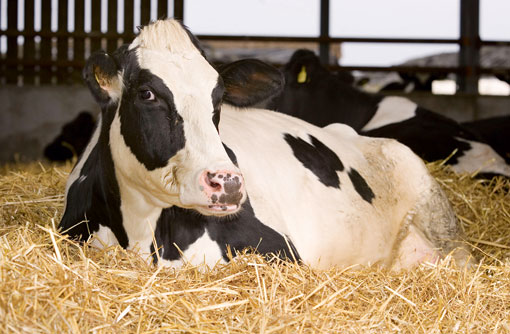Good environment during dry periods boosts returns

Dairy farmers could see big returns by focusing on environment management during the dry period, as Dairy Update reports.
Providing a stress-free environment with adequate trough space and the correct diet goes a long way to setting dry cows up for their subsequent lactation.
And these are the key elements of transition period management that are having a big impact on fertility, yield and overall cow health in a North Yorkshire Holstein herd.
A re-think on how dry cows are housed and fed at the Booth family’s 180-cow herd at Wigglesworth Hall, Wigglesworth, Settle, has triggered a big improvement in conception rates within the 50-70 day post calving period. Herd average is 8,250kg at 4% fat and 3.2% protein – an increase of about 1,000 litres a cow over the last year.
Fertility was an ongoing problem. “We’ve introduced out-of-parlour feeders to get more into the higher yielders, but overhauling the transition period has made a big difference,” says Edward Booth.
“We’re now as strict about the dry cows as we are about the milkers.”
Based on advice from Genus RMS, cows are now dry for 45-50 days and initially fed equal parts of grass silage and whole-crop with dry-cow mineral. Dry cows are run in separate cubicle accommodation for the first 21-28 days after drying-off and are then moved to newly converted loose-housing until calving.
“It’s a light and airy building that was originally a sheep house. We’ve made considerable modifications to create a high-welfare environment for cows in late pregnancy. They can lie more comfortably and have ample trough space, so there’s no competition or stress,” says Mr Booth.
The final stage before calving sees cows fed a mix of 20kg of silage, 2kg straw, 2kg maize meal and 2kg protein blend plus 120g of magnesium chloride with 150g of dry cow mineral. Since introducing the new housing and feed regime, conception rates have markedly improved.
Regime
John Cook, Genus RMS technical director, says a “lack of precision” during the transition period is the main problem on farms where dry cow management needs improving.
“The key is removing the guesswork and ensuring cows are managed on a precise regime during the dry period to achieve a real benefit throughout the whole of the lactation.”
While diet during the last six weeks of pregnancy is important, he believes nutrition isn’t as crucial as the influence of a correct environment.
“Providing adequate trough space – 75cm a head for 21 days pre-calving until the cow leaves the fresh group – is essential. During the transition period cows need to be in a stress-free environment where comfort and welfare are a priority.”
Genus RMS technician Matt Whitehurst visits the Booth’s herd daily to identify cows on-heat.
“Correct transition period management is important for fertility, overall health and for cow yield as she moves into her lactation. At Wigglesworth Hall we’ve seen how all aspects of management have a role to play,” says Mr Whitehurst, who believes there’s still “massive potential” for many herds to look more closely at the transition period.
Dry period length
“The length of the dry period still varies a lot on many farms and can be as low as 30 days or up to 60 days. Shorter dry periods are considered a tempting option when cows are milking well, but there’s often a price to pay in terms of fertility and future health and production.
“A lot of dry cows carry too much condition and are over-fed in late pregnancy, so spending time looking at transition management, the length of the dry period and the feeding and housing during that time can’t be underestimated. It’s as important as managing the cow while she’s in-milk,” Mr Whitehurst stresses.
And the RMS costs are well worth it, according to Mr Booth. “If I had to pay a man 1.5 hours a day to find and AI bulling cows and maiden heifers it would be more expensive than the current RMS service, which is costing us about £12 a day.
“I think we’ve got it just about right. Shorter dry periods may be fashionable, but if a cow is giving 11,000 litres or more she needs to be dry for more than 30 days.”
In summer, the dry cows graze for the first three weeks of the transition period before coming inside for the final stage of the pregnancy.
“Even by doing that we seem to have nailed the milk fever issue, which suggests just how critical those last three weeks are in terms of diet and management.
“We’ve increased the number of pregnancies achieved in the 50-70 days post-calving – and the ‘money-cows’ are always the ones safely back in-calf below 100 days.”
